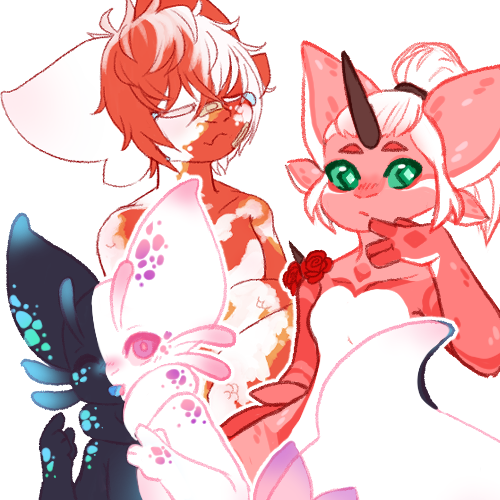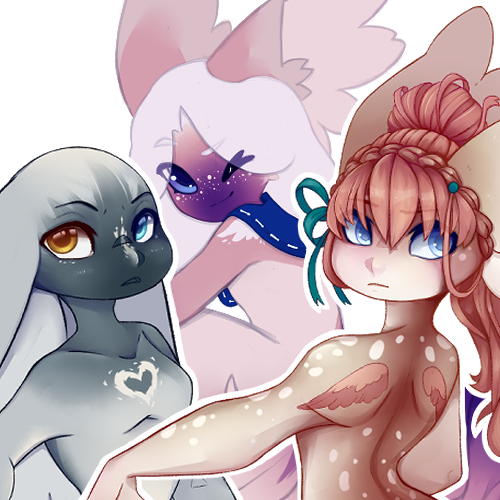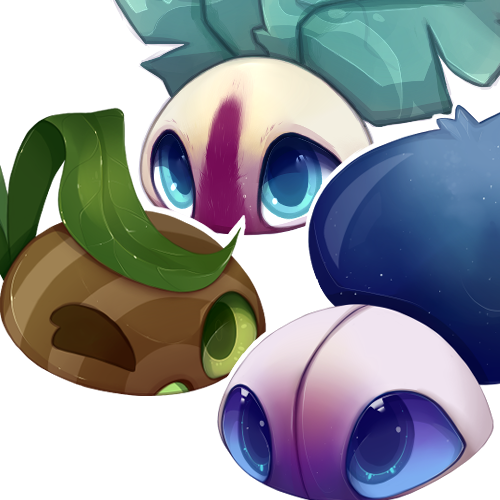Species
Lavaleek
Visual Trait Index
History
Lavaleeks were originally constructs made by a lonely god. Imbued with lava and fire to give them shape and warmth, similar to that of the god. They slowly grew more intelligent over time until they became their own species, their god now long gone.
Their place of origin is rumored to be the volcano on Helion, Mount Enya, way before Digamma was destroyed, but none are too sure if that is fact. Lavaleeks are the most common race on Helion, but can be seen on other parts of the Outerlands and on Epsilon.
Biology
Lavaleeks have a smooth, soft, skin like outer layer that is very flexible and stretch that helps the Leek change shape as it alters it mass. Their insides are warm and goopy magma that is not hot enough to burn other races. They are known to be a friendly and accepting species, expessially to outsiders. Lavaleeks typically love to socialize and have parties and are a very community oriented species.
Life Cycle
Lavaleeks start off as perfectly round, spherical, eggs. They have a hard shell that matches the colors of the to-be leek’, the shell is also shiny. These eggs are incubated in pools of lava within Helion, or if the eggs are to be raised in a place that does not have lava, they can also be placed within a constantly active kiln or a fire if it reaches a hot enough temperature. Eggs are typically held within the parent’s body for a month and then need to be incubated for around 3-4 months.
A freshly hatched Lavaleek is called a Leekling! They are small, pudgy, versions of Lavaleeks, very similar to human babies. From this point, Leeklings age like normal human children, hitting their toddler and child ages at around the same, as well as becoming adults at the age of 18.
Due to their place of origin, Lavaleeks can live for a huge variation of time, some can live only to 50 years old but others have lived basically forever. This all depends on how hot their body is kept. If a Leek were to be frozen in ice, and its body completely cools down, the Leek will die. This effect also can happen if a Leek eats too much frozen foods without allowing their body to completely warm back up. The older a Leek gets, the harder it is for them to maintain their own body heat and must take regular heat baths (in fire, lava, ect) to keep themselves alive. This doesn’t happen at any specific age and generally varies depending on the Leek themselves.
When a Lavaleek perishes, their magma slowly hardens into stone, and once completely cooled, their body loses all color and they become petrified like a statue. Over time this statue crumbles and turns to dust.
Food & Diet
Lavaleeks do not need to eat to survive, but many enjoy the process of consuming food. While they won’t die if they do not eat, eating can generate energy that can help their body continue to produce its own heat, which can lengthen their lifespan. The food, once eaten, quickly dissolves into their magma. Leeks can also taste food they have eaten, but due to their “digestive tract” they cannot vomit or regurgitate their food. Cold food, as mentioned in the Life Cycle section, can cause their body to cool down, and if too much is consumed can kill them if they do not allow their body to reheat. Also, as mentioned in the Biology section, Leek can eat gemstones to gain physical strength, the harder the gemstone the more strength they gain.
Any diet or food is suitable for Leeks. They can be pescetarians, vegetarians, ect.
Head, FACE, & aNTENNAE

Leeks have round heads and a small muzzle, with two slits for their nostrils similar to that of a snake. They have a set of eyes and a set of antennae that are like their ears. These Antennae can be short and pudgy or long and thin, but their tips must be round and can be no longer than half (1/2) their body length.

Left Antennae is a long/thin type while the Antennae on the right is a short/pudgy type.
Designers are welcome to mix and match these traits to create their desired antennae type.
Antennae can be curled! However, when designing, please take note that the curled part counts to the total length of your Leek's antennae and much fall within regulated sizes unless you have aquired the oversized mutation.
We recommend including a curled and uncurled antennae versions on your submission to make approvals easier.
Stature & Body Types
Lavaleeks have legs similar to plantigrade legs, they’re like if a Human was constantly standing on their toes. Their toes are similar to those found on creatures with paws, soft and round digits of which they have three of on each foot, with no dewclaw. Their arms and hands are also similar to that of a human, but they only have three fingers and a thumb on each hand. Leeks can, but don't have to have, fingernails on the tips of their fingers. Alternatively, these fingernails can make their hands more similar to claws.
Skin Type
Lavaleeks have a Smooth Skin type texture.
Their skin can contain warts but cannot typically become tanned or sunburnt.
Their body doesn't grow hair like humans, since their smooth skin is more similar to that of an amphibians.

This image has stylistic pores
which you are more than welcome to draw on your Leek,
but please retain from making pores look like scales.
Mouths & Teeth
Eyes & Insides
The inside of a Leek consists of a two toned magma, a light and a dark color in the same color range. Their insides look similar to that of a lava lamp and this material functions as their blood, digestive tract, and muscle. With this, Leeks can control the shape of their bodies, making them look muscular, pudgy, or even have breasts, but most of these are just for aesthetic reasons. To gain physical strength they must digest gems, the harder the gem the more strength they get in return, this is why fighters are highly respected in Leek culture. These colors also have a direct effect on their eyes, one color will be their sclera and pupil color, and the second will be their iris color.
Another side effect from being created by a god, caused Leeks to not have set sexes. A Leek can be male, female, neither, or both and may switch their designation on will. This is why same sex Leek couples can have biological children and has caused Leeks to be able to have children with other adult species in Epsilon, like Sors Magna.

Tail Types

Species Feature: Nubbins
These are nubbins and/or whiskers that can grow on your Lavaleek!
Find more information about their details and limitations here.
Species Feature: Innertube
A deflatable excess of skin around the neck which can balloon up and fill with air.
Find more information about their details and limitations here.
Sors Magna
Visual Trait Index
History
Biology
Life Cycle
Food & Diet
Head, FACE, & Ears

Sors Magna have round heads with a small nose, similar like that to a human's. They have one set of eyes with white sclera and a colored iris and pupil. Their ears are typically around 1.5 heads big but can be 2 heads at max without the use of the oversized trait.
Stature & Body Types
Sors Magna have a bipedal bone structure with hooved feet. Their arms and hands are also similar to that of a human, they have five fingers on each hand. Sors Magna can, but don't have to have, fingernails on the tips of their fingers.
Skin Type
Sors Magna have fur that covers their whole body.
Mouths & Teeth
Tail Types
Sors Magna have long wip like tails that can be covered in a long curtain of waterfall like hair. At minimum, tails can be half the length of their legs and at most, tails can be one and a half times their body length.

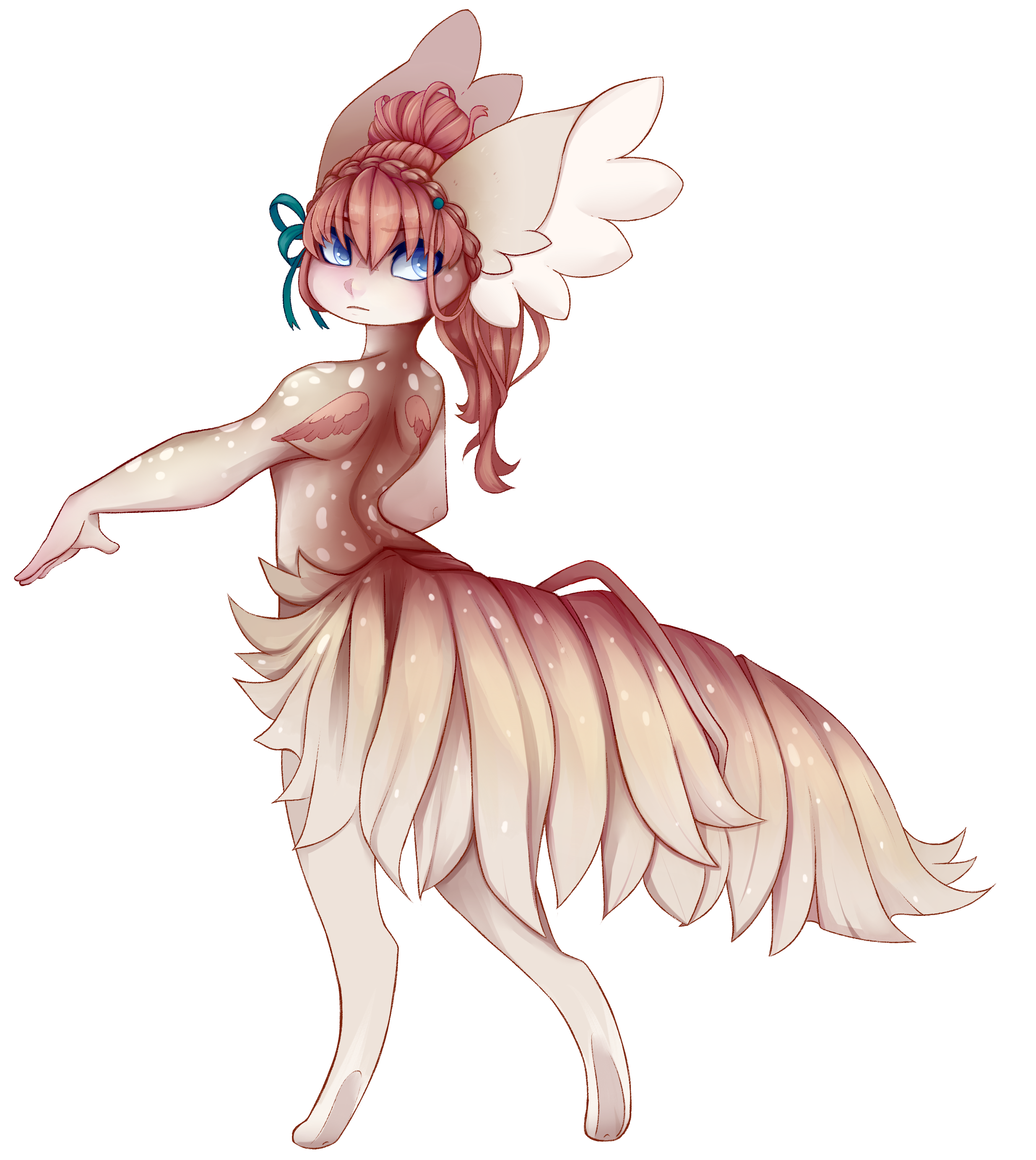
Species Feature: Sors Magna Wings
Sors Magna have special feathered wings that they can hid in their body by turning them into a tattoo like marking.
Sors Magna MUST have this feature.
Find more information on this trait here.
Whishes
Visual Trait Index
History
Whishes did not exist before the calamity that destroyed Digamma. Only with the magical tethers holding the Outerlands in orbit around Epsilon are Whishing Stars made possible.
Biology
This species is generally very small, ranging from just four inches(10cm.) in length to a few feet(91cm.)!
Lacking teeth, Whishes do not chew their food but instead swallow it whole where it will be broken down in their bodies.
Their bodies are squishy and soft, like marshmallows! Their skin has an almost jello-like texture but can be changed with the Integument trait. Instead of blood or innards, the insides of a Whish is a whirlwind of magic barely contained. If injured, this magic will begin to spill out from the wound and appear as glittery liquid similar in color to the Whishes irises- where it will quickly evaporate and rejoin the magic of Epsilon's atmopshere.
Injuries must be mended quickly for a Whish to recover; as they are small and usually fragile when their innate magic is lost! It is not uncommon for a Whish to shrink in size after an injury like this, but they will be able to regenerate this magical energy overtime and thus grow in size yet again.
Whishes are a Shapeshifting Species. They are able to transform into any other Epsilon species at will with the appropriate prompts completed!
Life Cycle
Life for a Whish only begins after a magical anomoly called a Whishing Star crash lands somewhere on Epsilon. These Whishing Stars are comets that managed to penetrate Epsilon's atmosphere, where they were drawn to the tethers holding the Outerlands in orbit. After stumbling through the tethers, the comets are then imbued with intense magical energy.
Once these Whishing Stars finally crashland somewhere on Epsilon, this magical energy is temporarily displaced at the crash site. It can take moments or days for this energy to finally amass back together in the center of the crash site- where suddenly a tiny sprout will pop up from the ground. The richness of the soil in the crash site makes no difference to the sprout as it receives all of its nutrients from the energy now rooted in the ground below.
It can take mere days or months and sometimes even years for a Whish to finally emerge from the ground- their plant growth now taking the place of the sprout aboveground. The Whish is now fully formed!
Whishes should not be pulled from the ground of their Crash site before they are ready to emerge!
The lifespan of a Whish can vary, but it is assumed they can live for thousands of years if they nurture their magical cores. Shapeshifting into other species such as Lavaleeks can also perpetuate a Whish's life span.
Food & Diet
Whishes are omnivorous! They tend to eat anything they can fit into their mouths; which is surprisingly a lot. Typically Whishes need a lot of food to sustain the constant energy surges from the magic within them!
Head, FACE, & Body
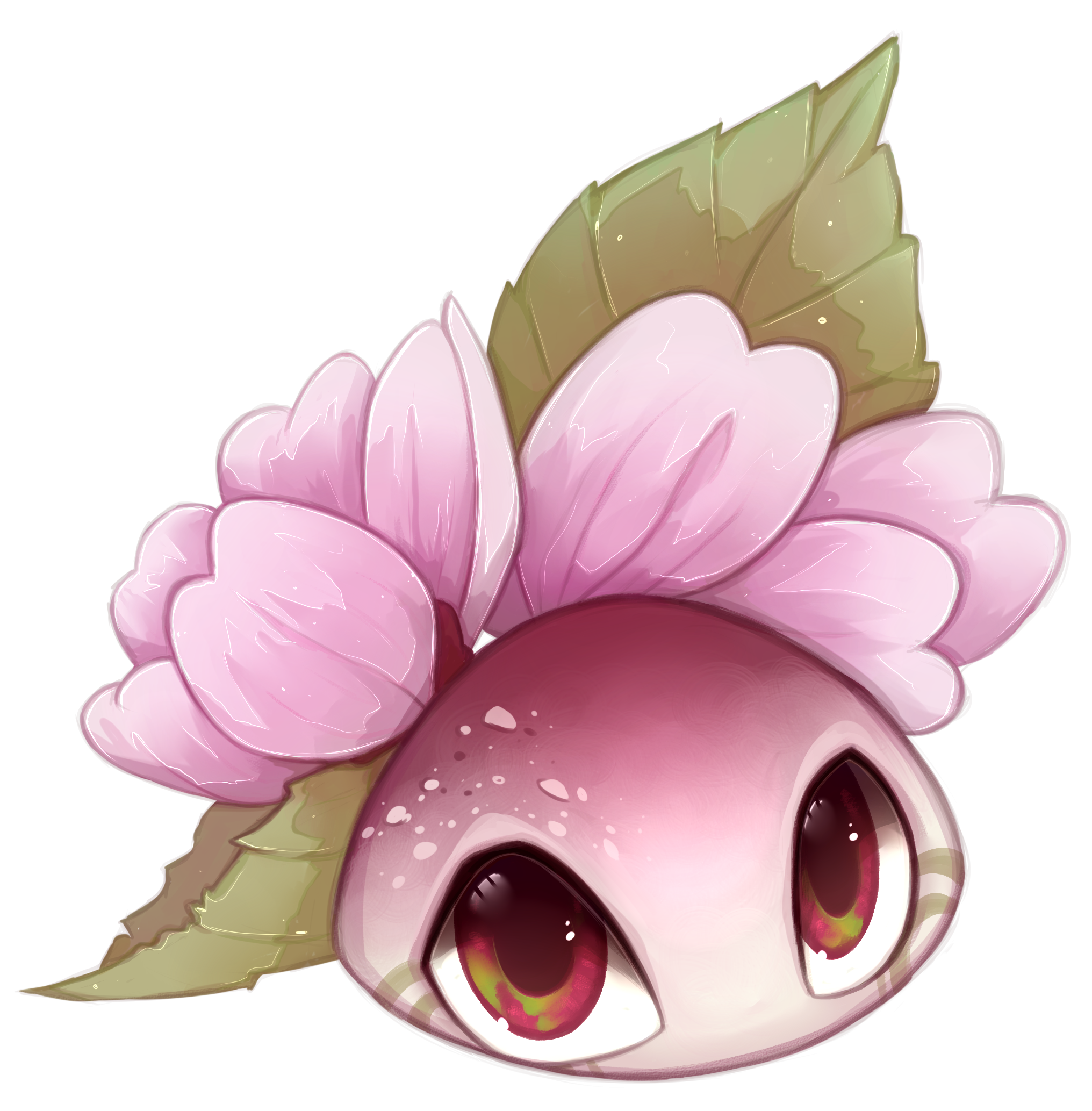
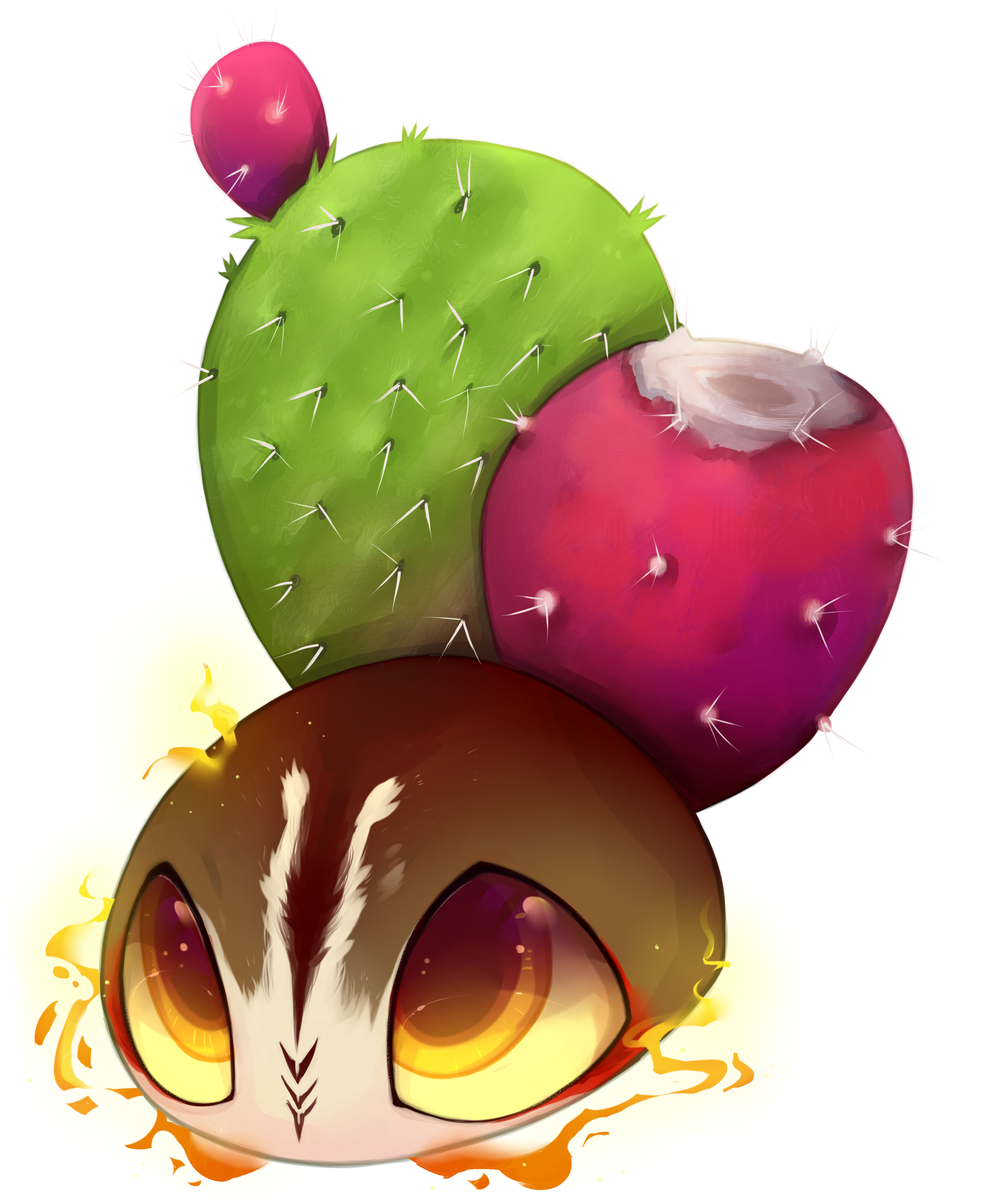
They have a hemispherical shaped body with a single set of eyes and a small mouth set at the front. With the Extra Appendages trait Whishes are able to have small "nubbin"-like limbs!
Eyes, Mouths, & Teeth
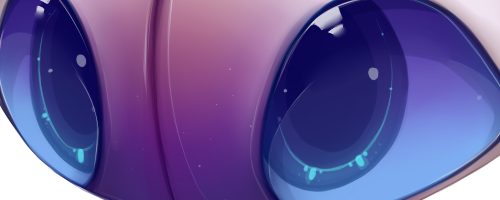
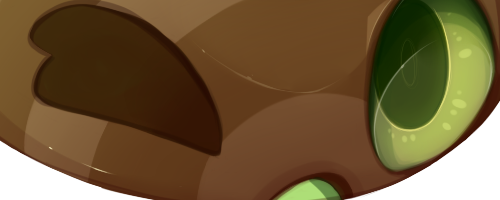

Whishes have round eyes with a sclera that is a lighter color than their iris. White sclera can be obtained with the Odd Eyes trait. Their pupils are typically a darker shade than their iris, but the same hue- however they can also be black, white or the exact same color as their iris.
They have colored mouths that match their eyes and no teeth!
Plant Growth
Whishes have plant growth typically towards the back of their body- however, these plants can sprout from other parts of their body on rare occurance. This plant growth is normally the same that the Whishing Comet crashed into which spawned said Whish; but being purely magical creatures, these plants can change as the Whish grows- and sometimes the raw magical energy from the comet itself can change the biological makeup of the plant matter it comes in contact with.
Whish bodies are normally too small to house more than one species of plant, however with the Grafting trait they are capable of growing more than one species.
All species of plant matter are able to sprout from a Whish- whether they are fictional or real plants. If it can be identified as a plant, then it is capable of sprouting with a Whish after a Whishing Star has landed.

Prickly Pear Cactus

Cherry Blossom
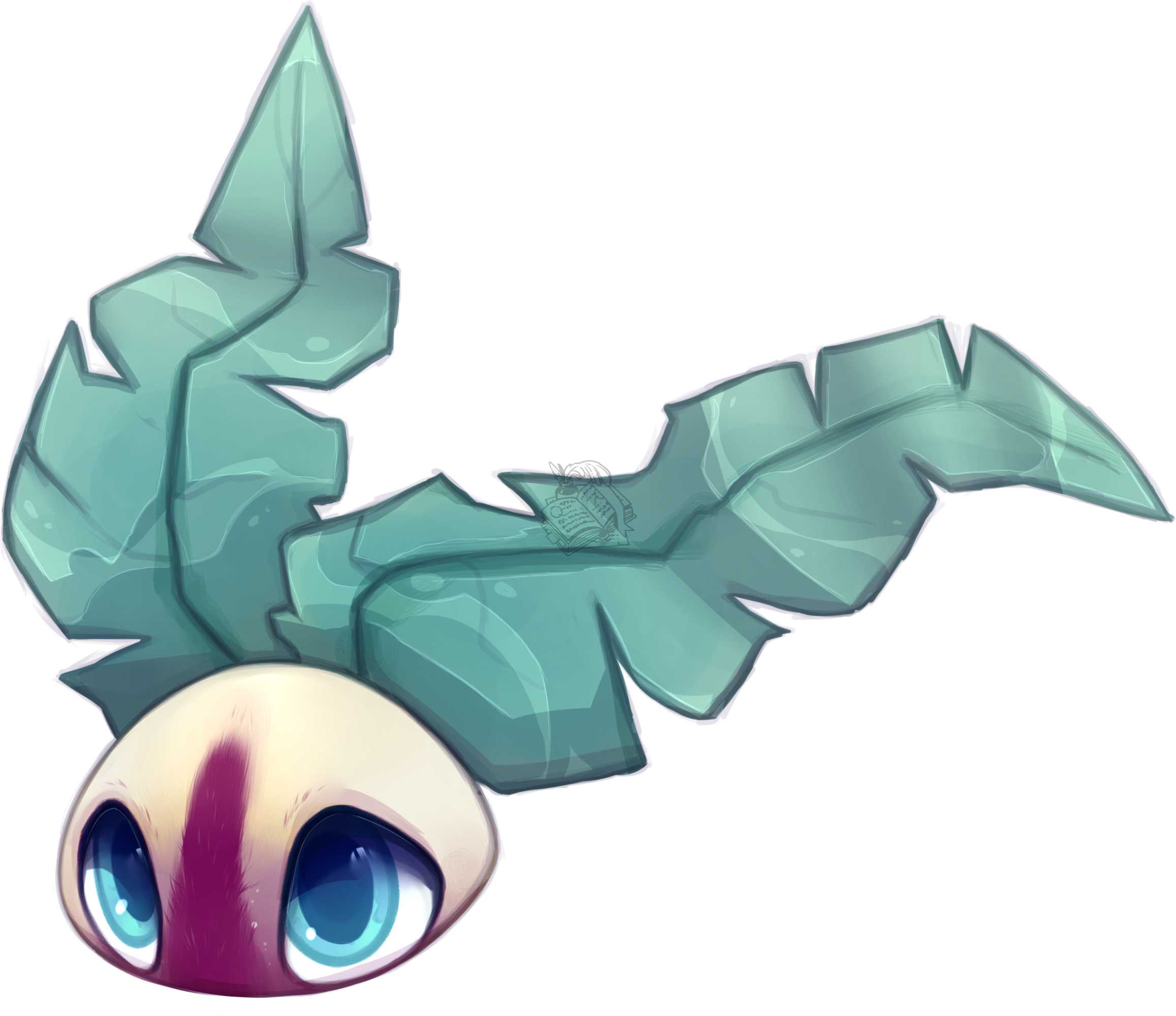
Palm Tree
Any part of a plant can be used when creating a Whish with a MYO Slot. Every part of a plant can be present on a Whish at the same time without the Grafting trait, as long as all parts present come from the same plant species.
The plant species are specific- meaning that without the Grafting trait, a Whish could not have multiple different kinds of cacti growing from it (ie. Prickly Pear Cactus Whish only has cacti growing on it of that kind- and does not possess another species such as Kingcup or Rattail Cactus).
Plant Growth must appear to be the same in color as the plant naturally would- any coloration natural to that species is acceptable and multiple colors can be used at once if more than one growth is present. Discoloration/unnatural plant colors can be obtained with the Variegation trait!
Species Feature: One with nature
This feature is a plant growth that will always come with a Whish. This is typically represented by the plant growth sprouting from a Whishes body.
For more information please see the One with Nature feature or the Plant Growth feature.
Snoggos
History
Snoggos were one of the original inhabitants of Epsilon, long before the world had flooded.... tba
Biology
Life Cycle
Food & Diet
Head, FACE, & Ears
Stature & Body Types
Skin Type
Mouths & Teeth
Tail Types
